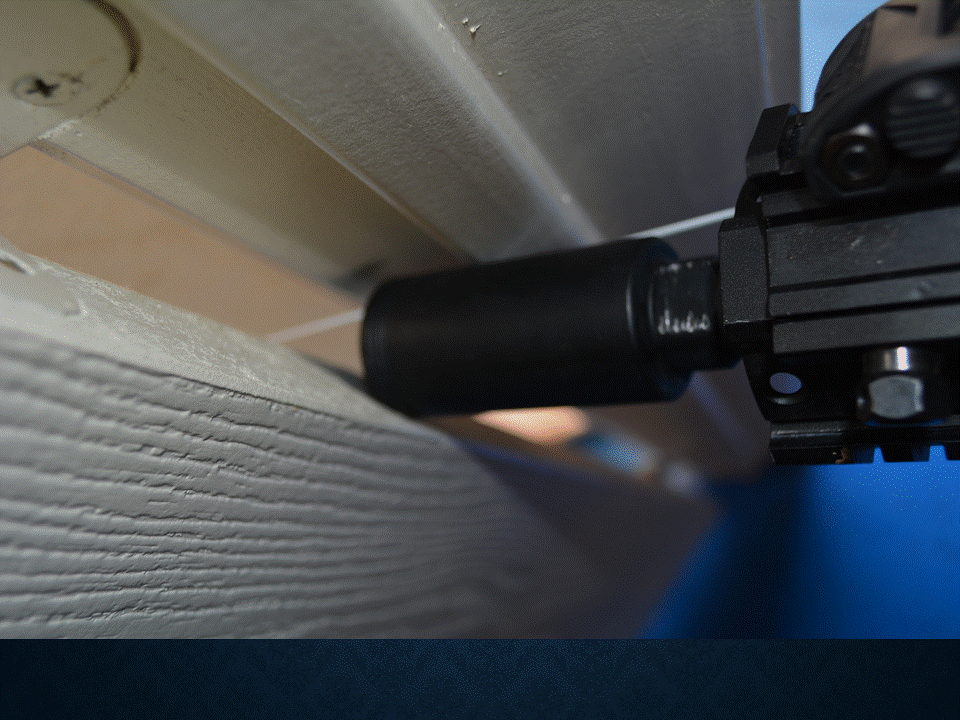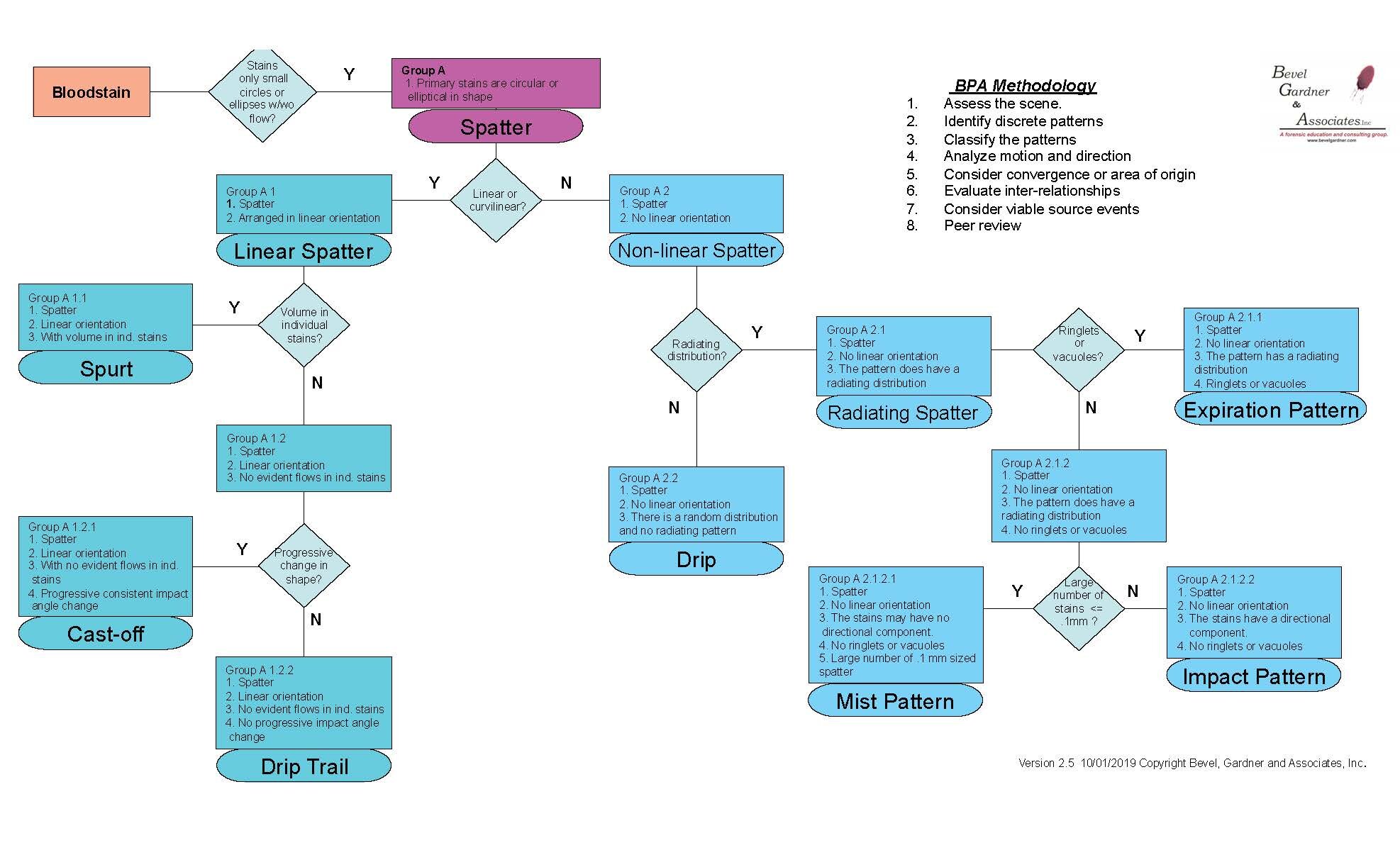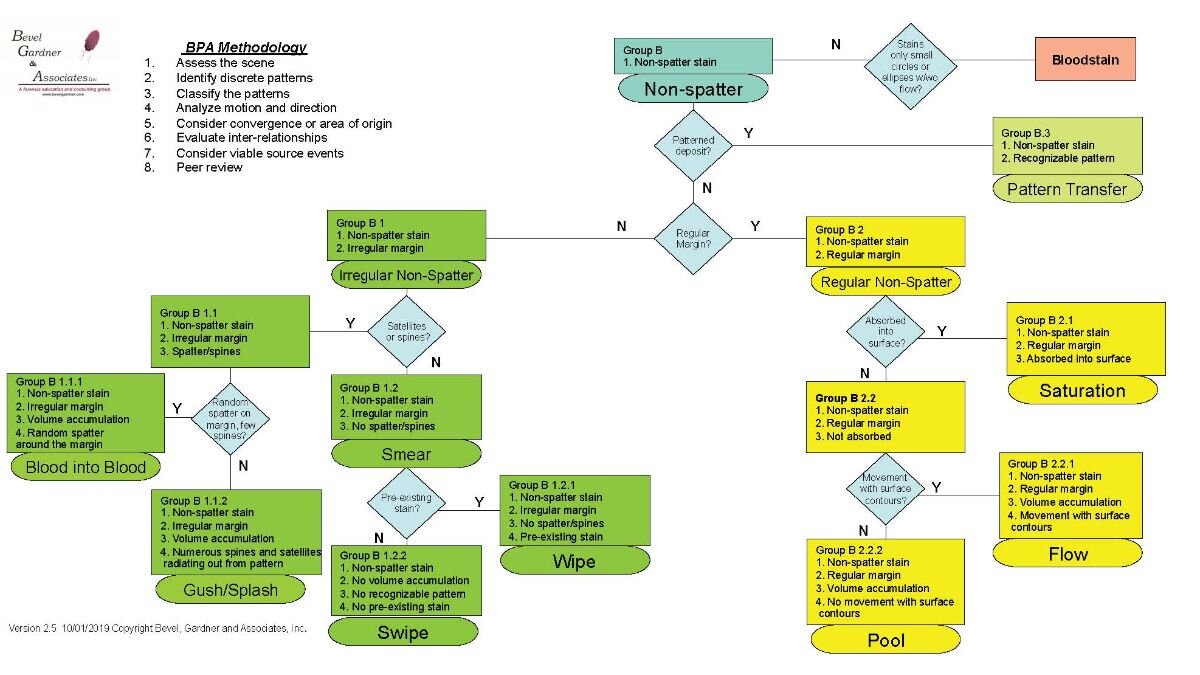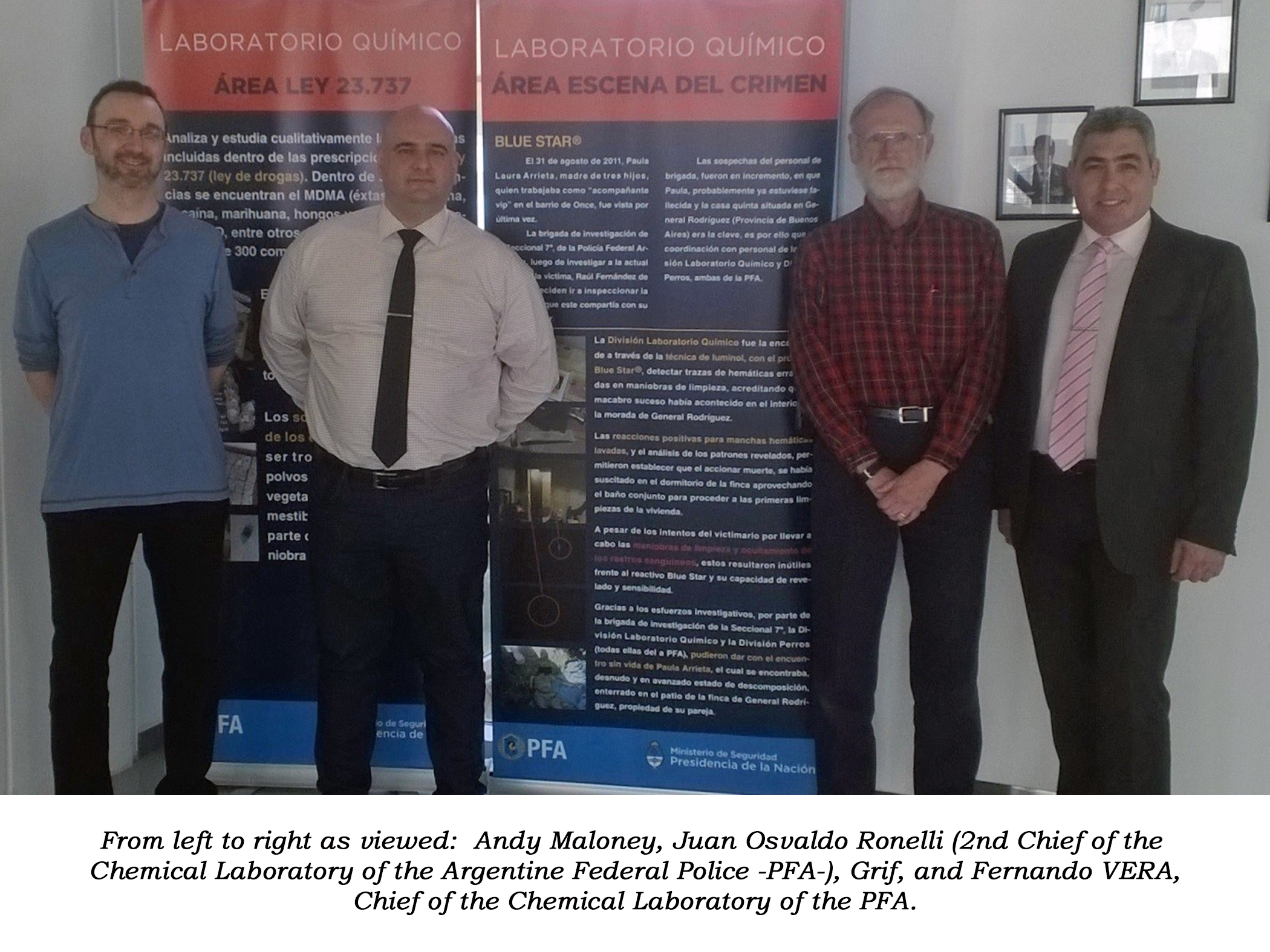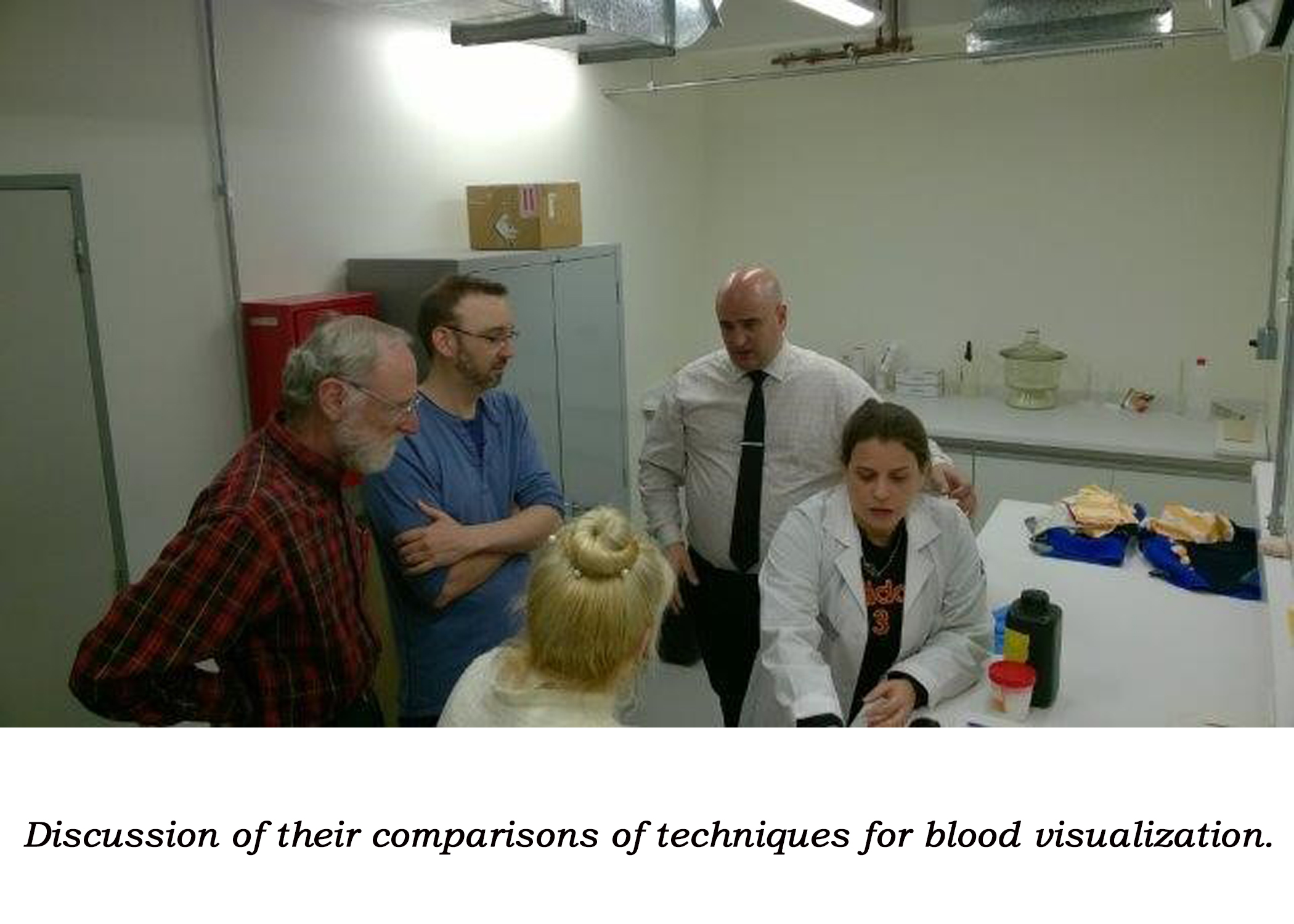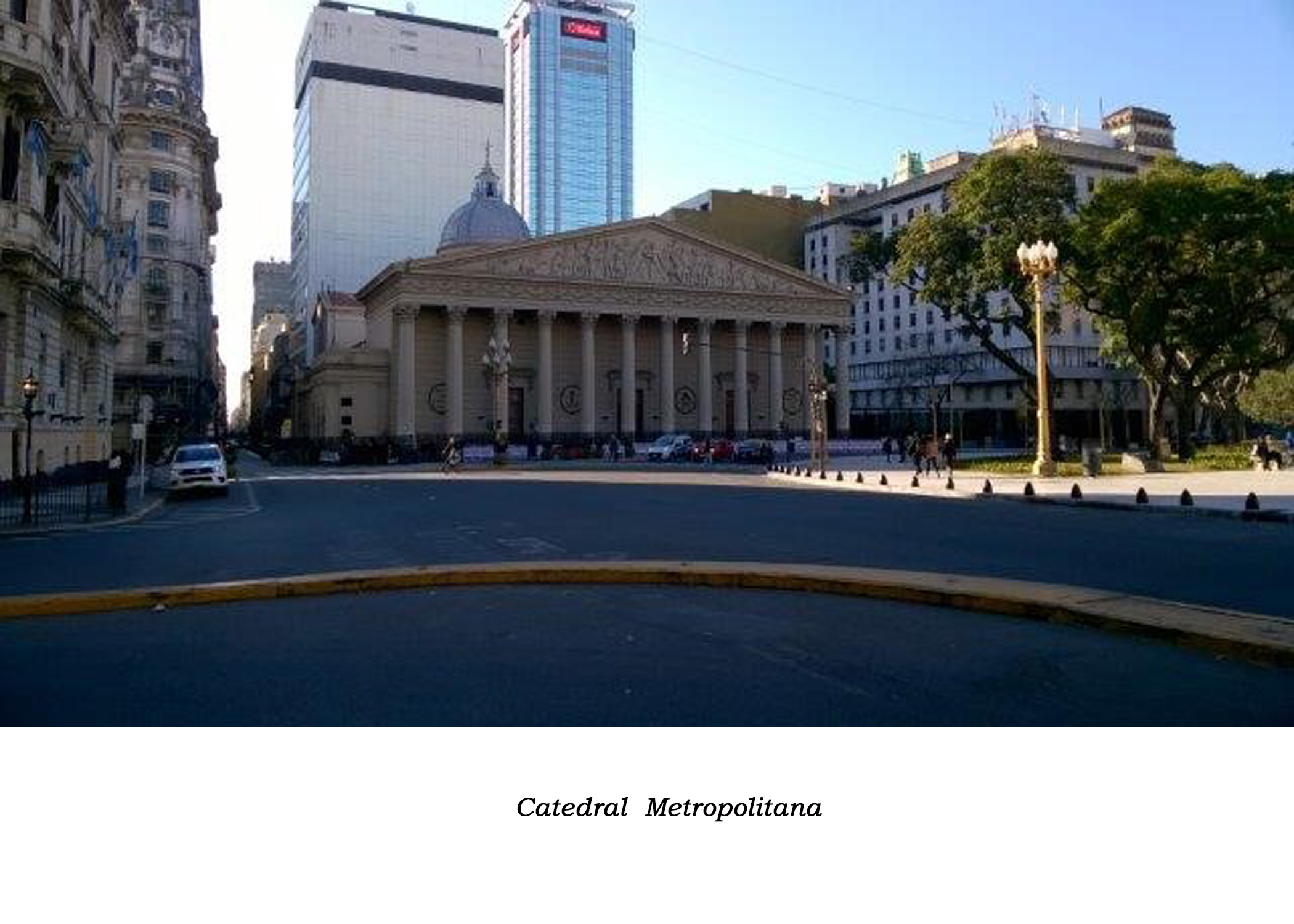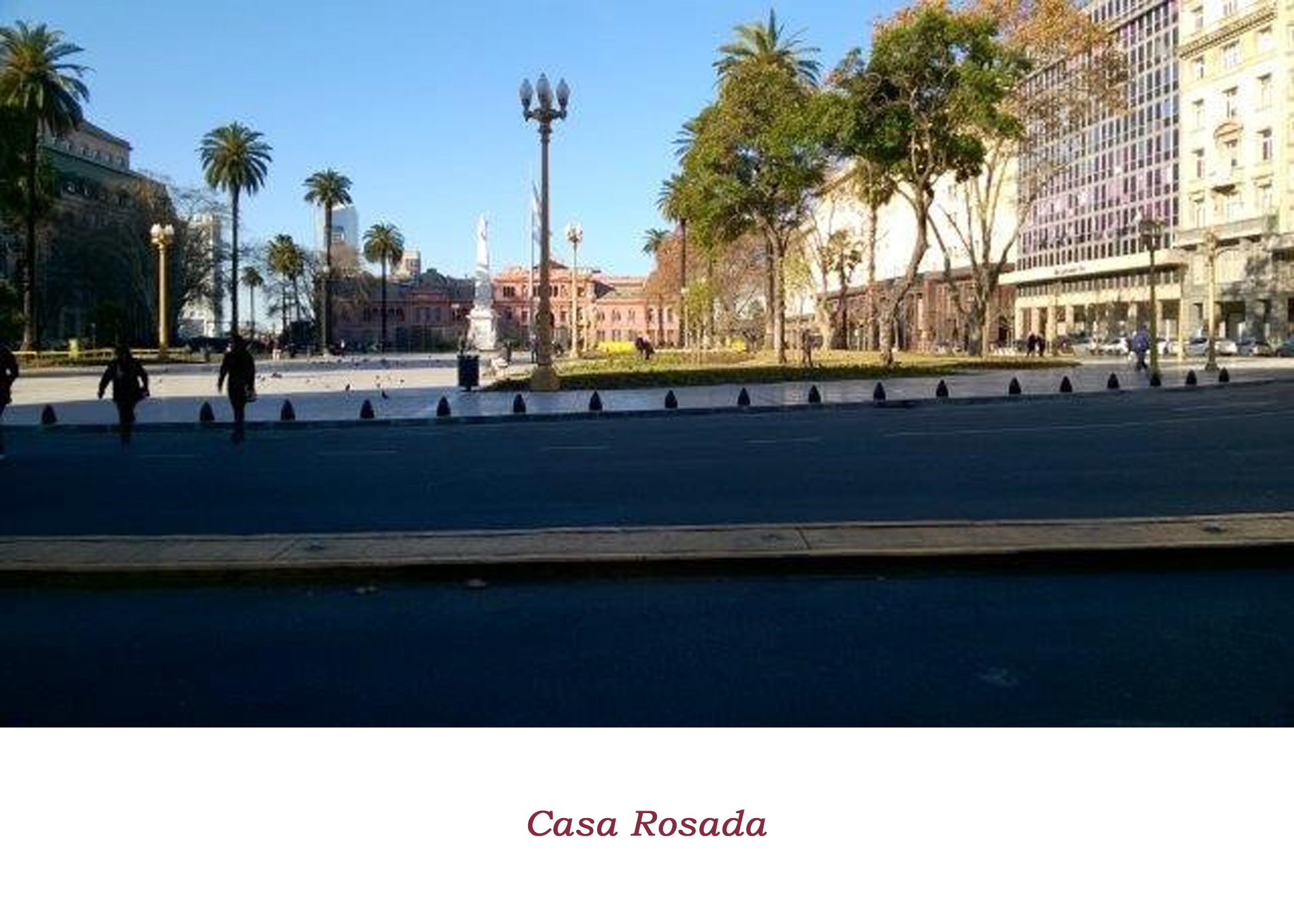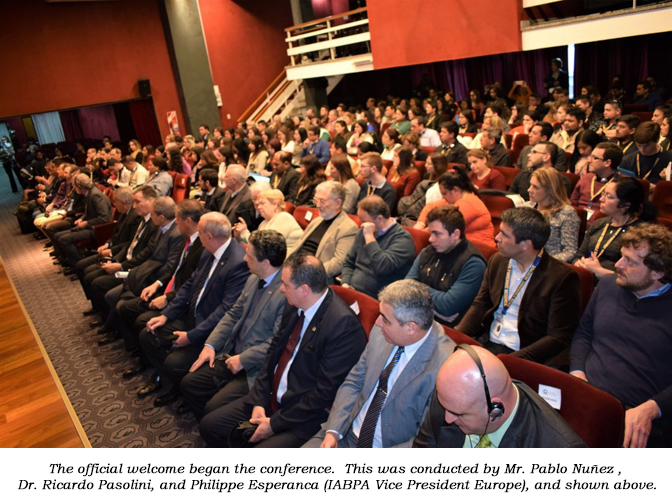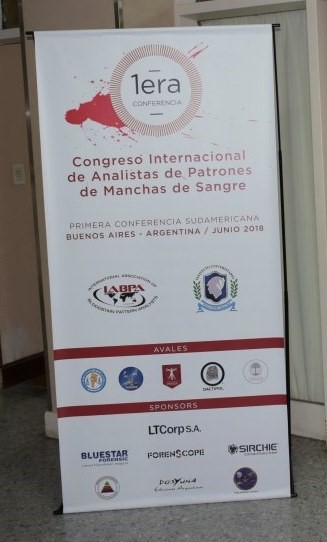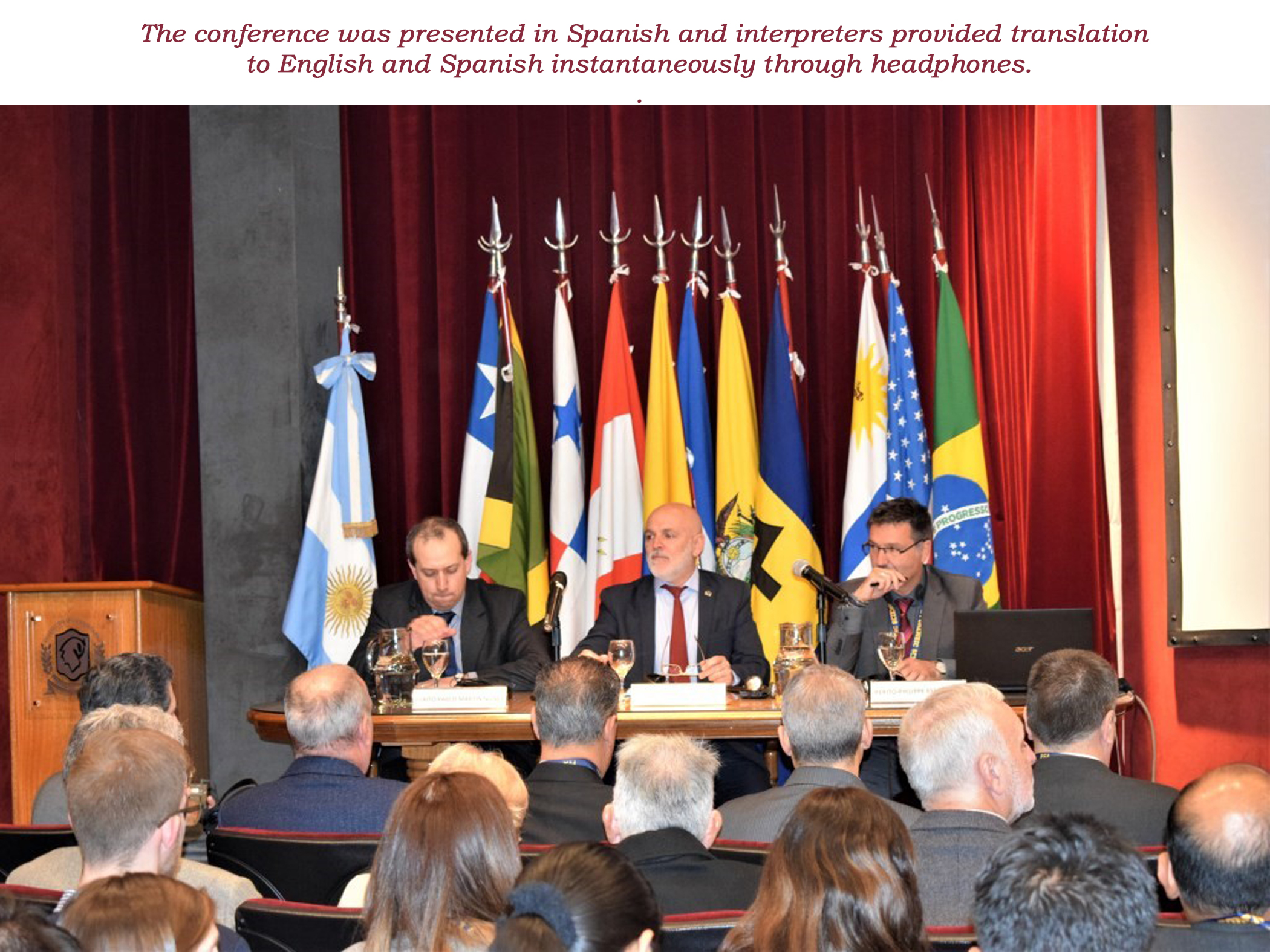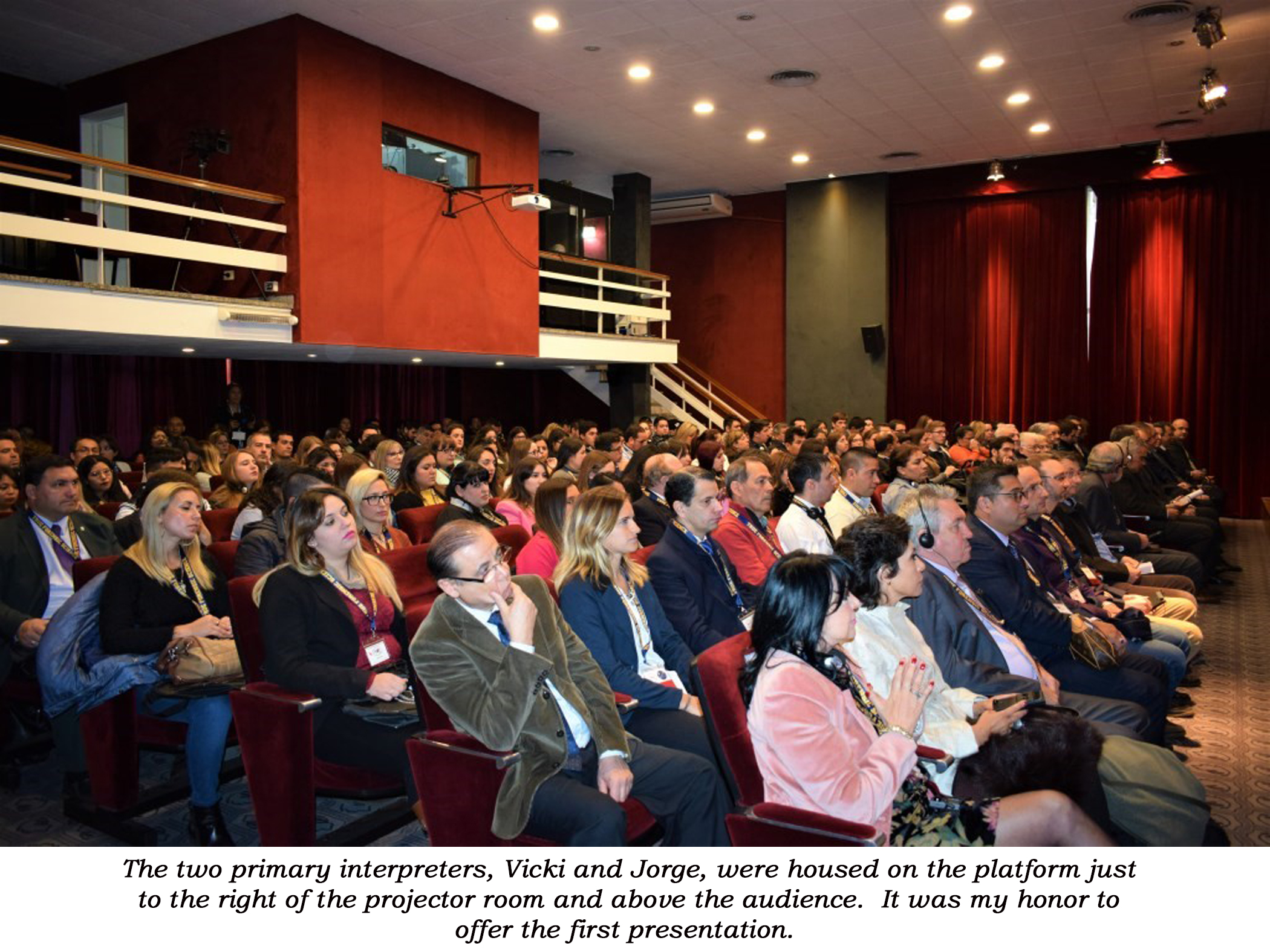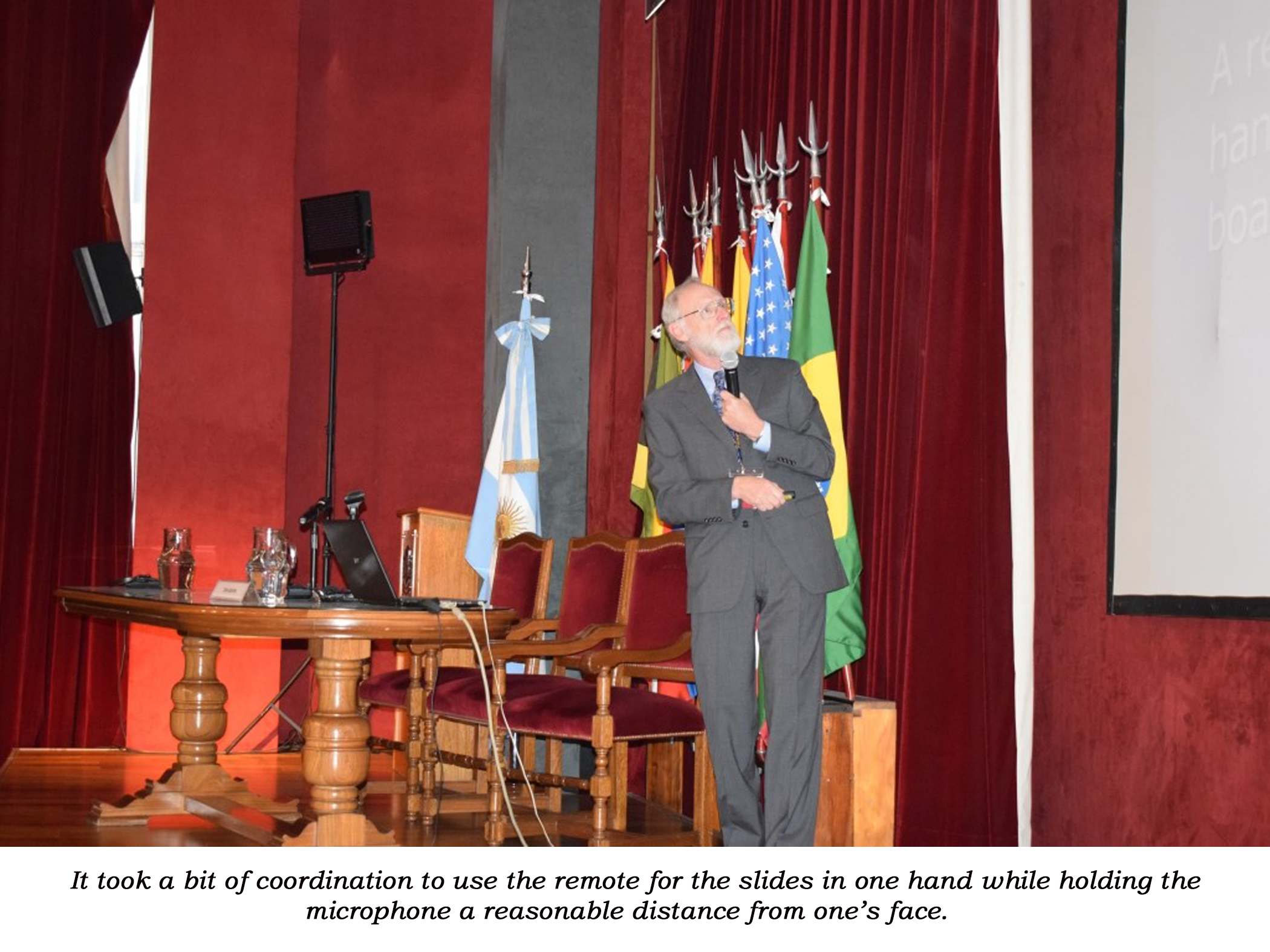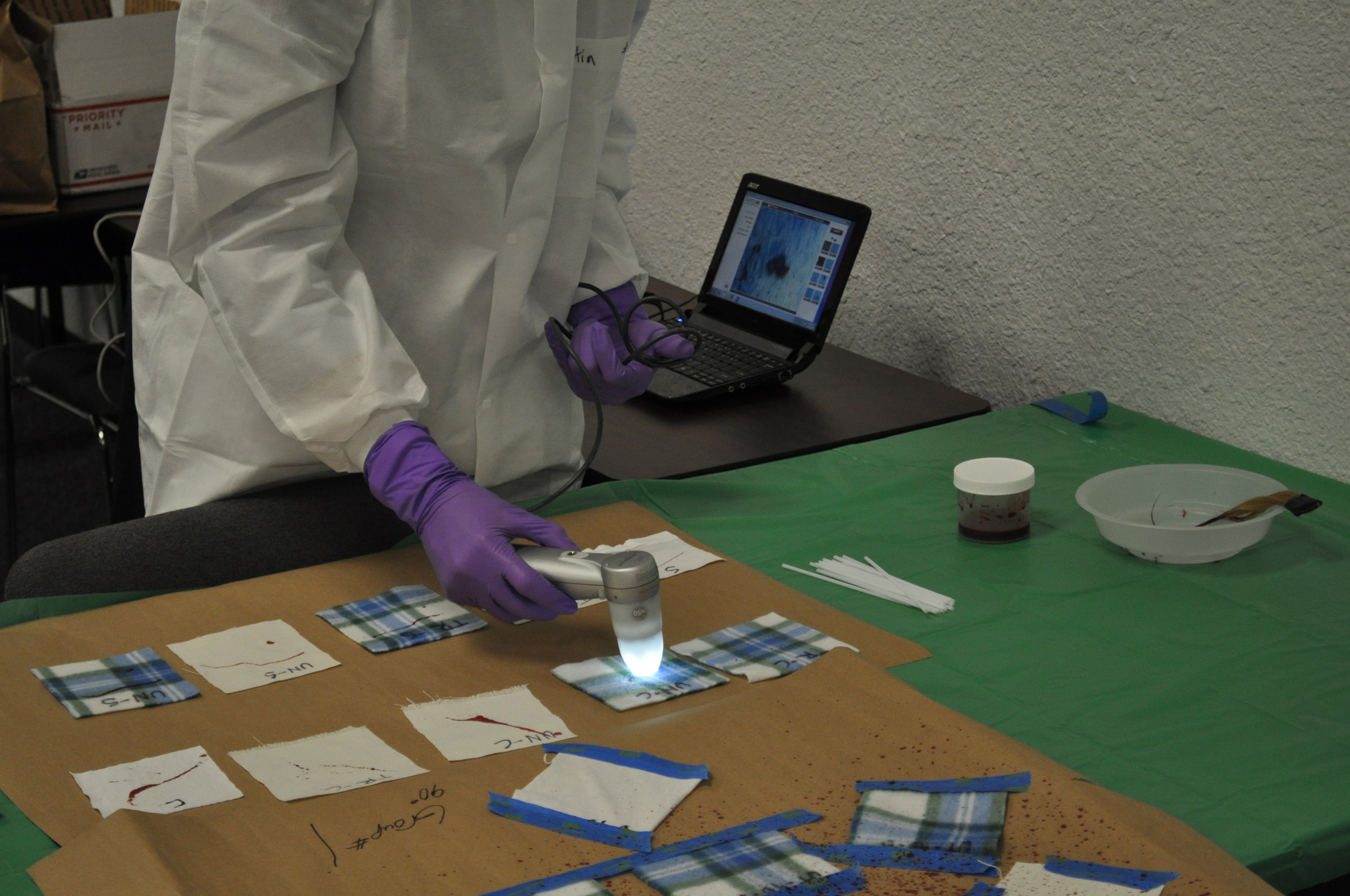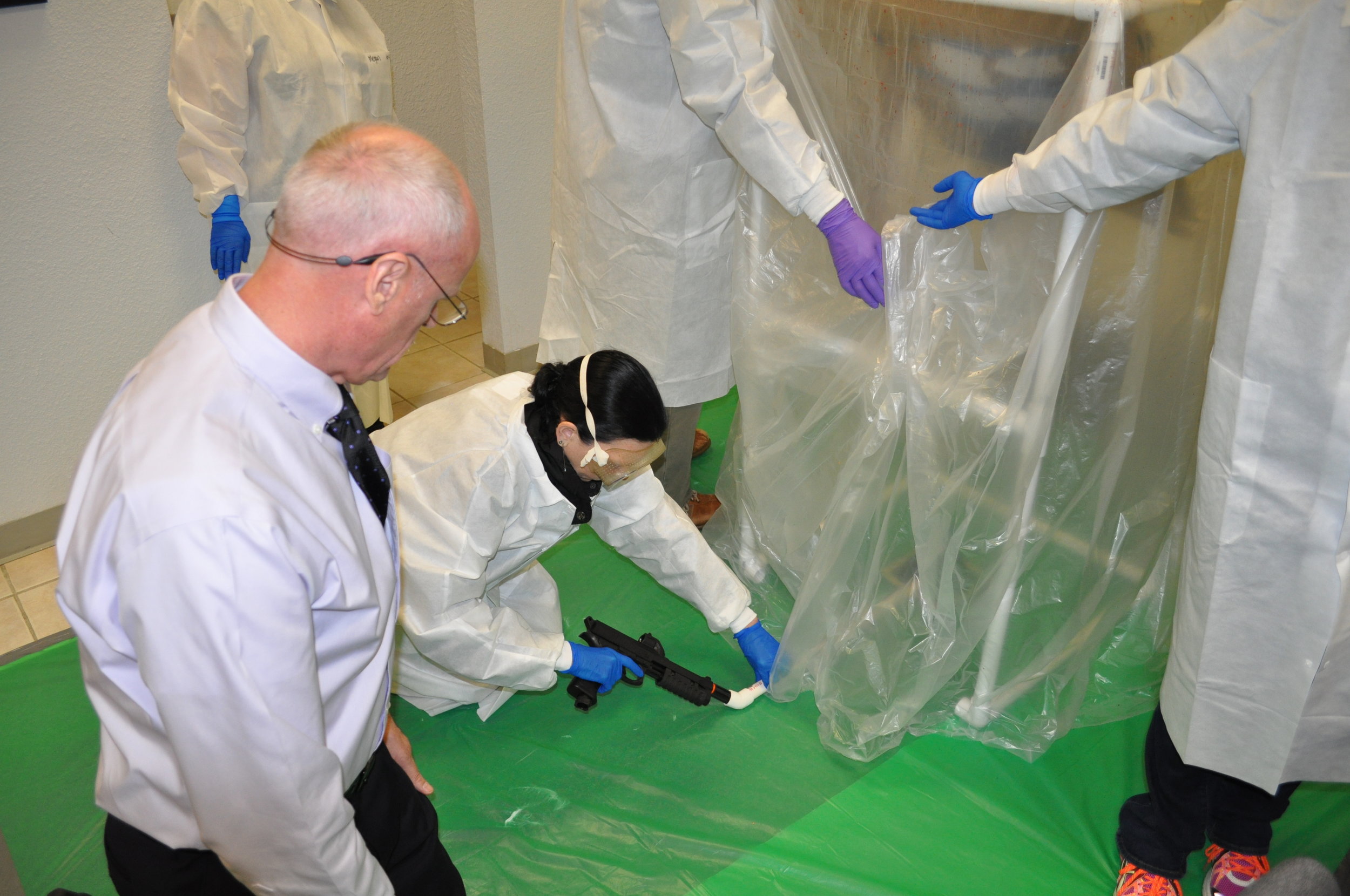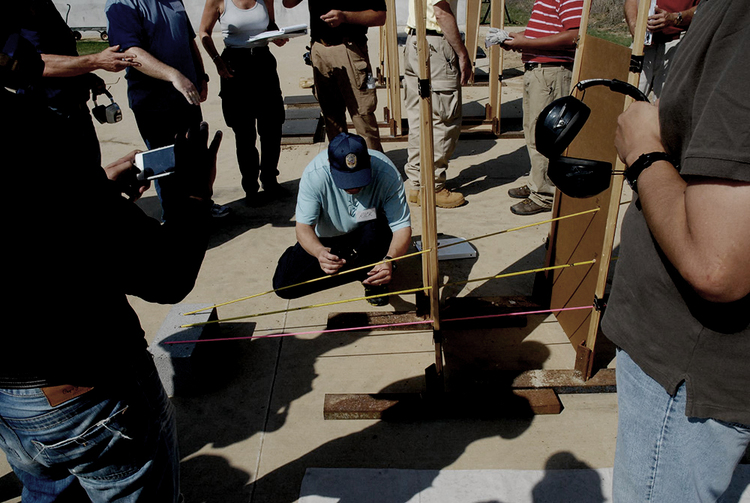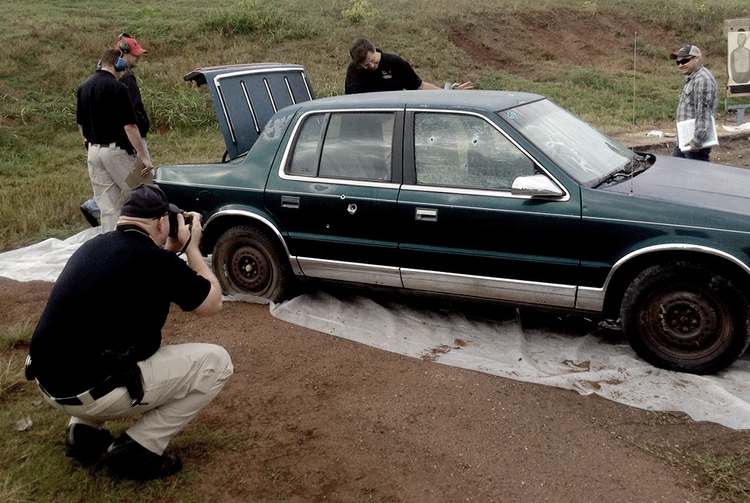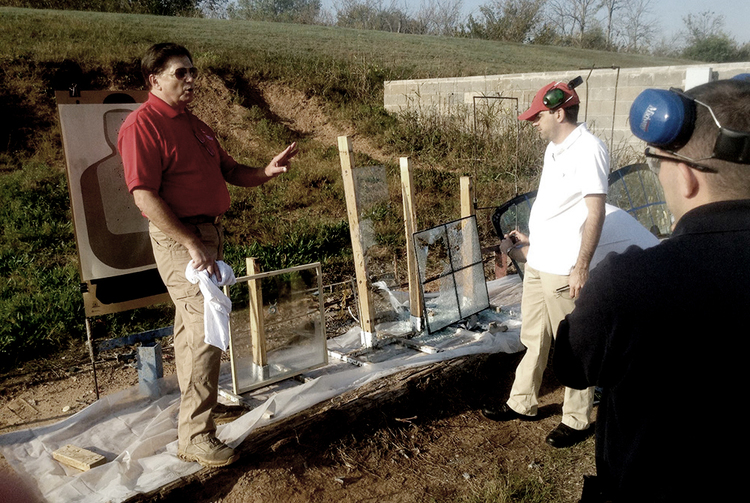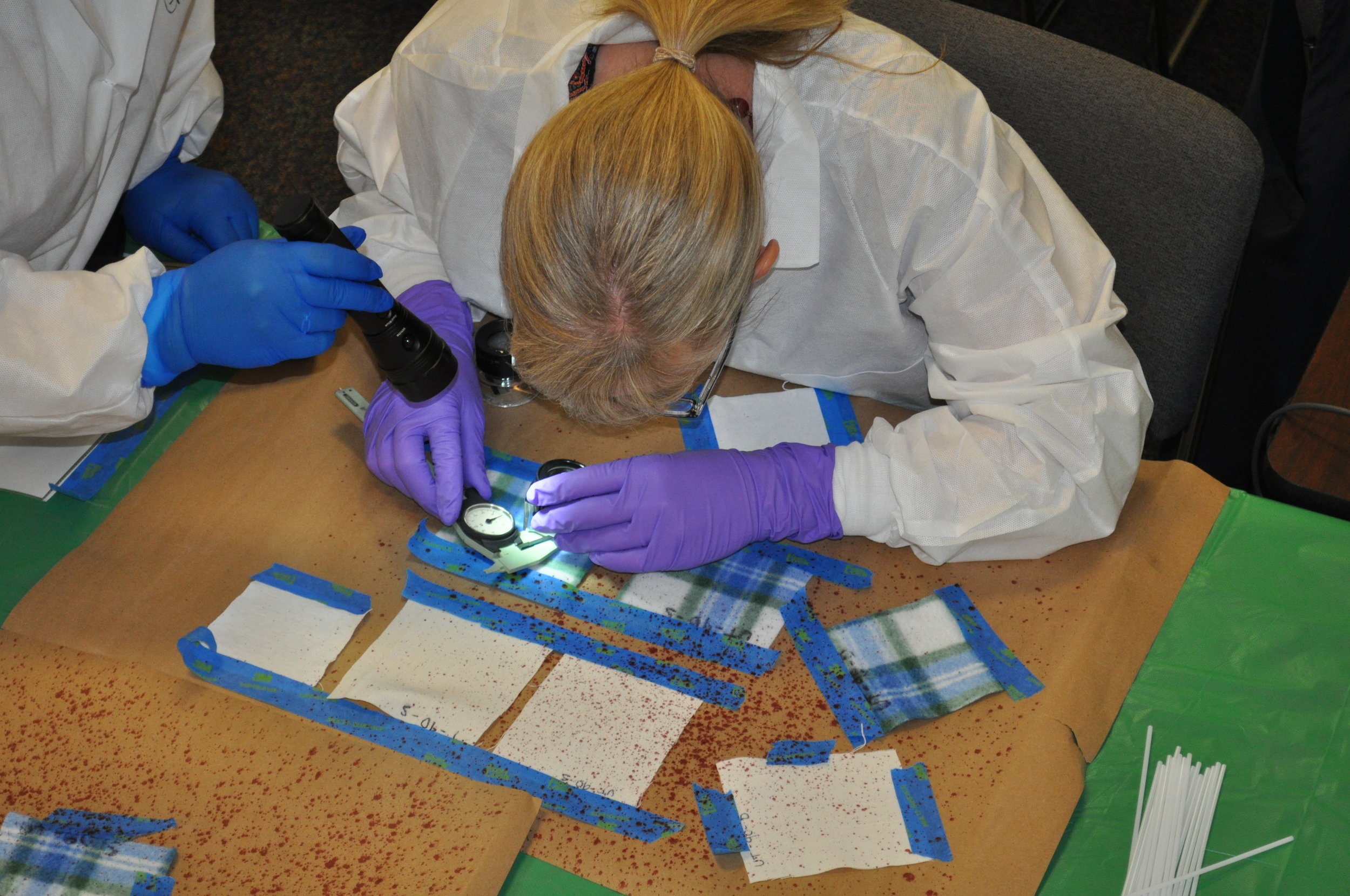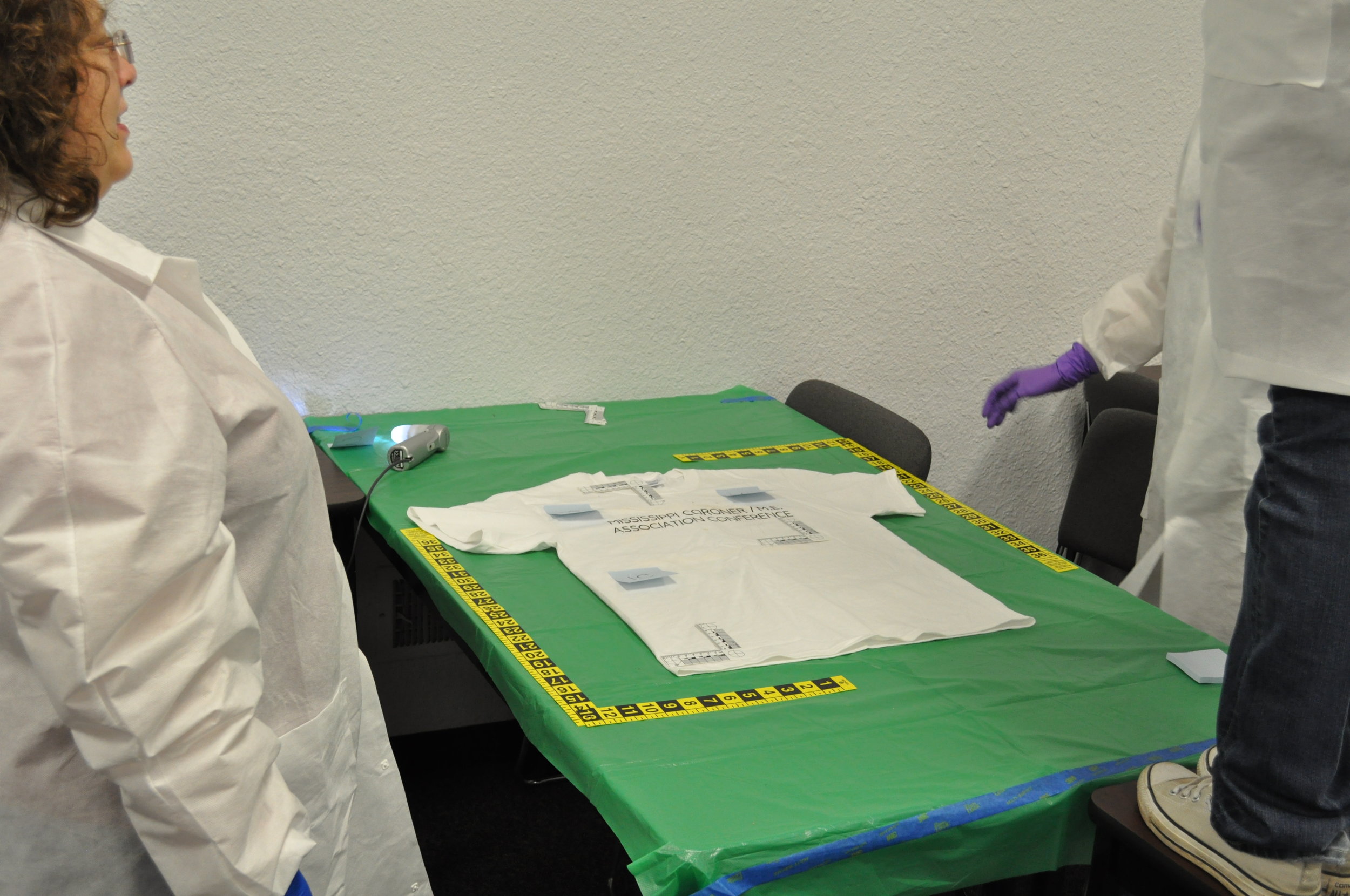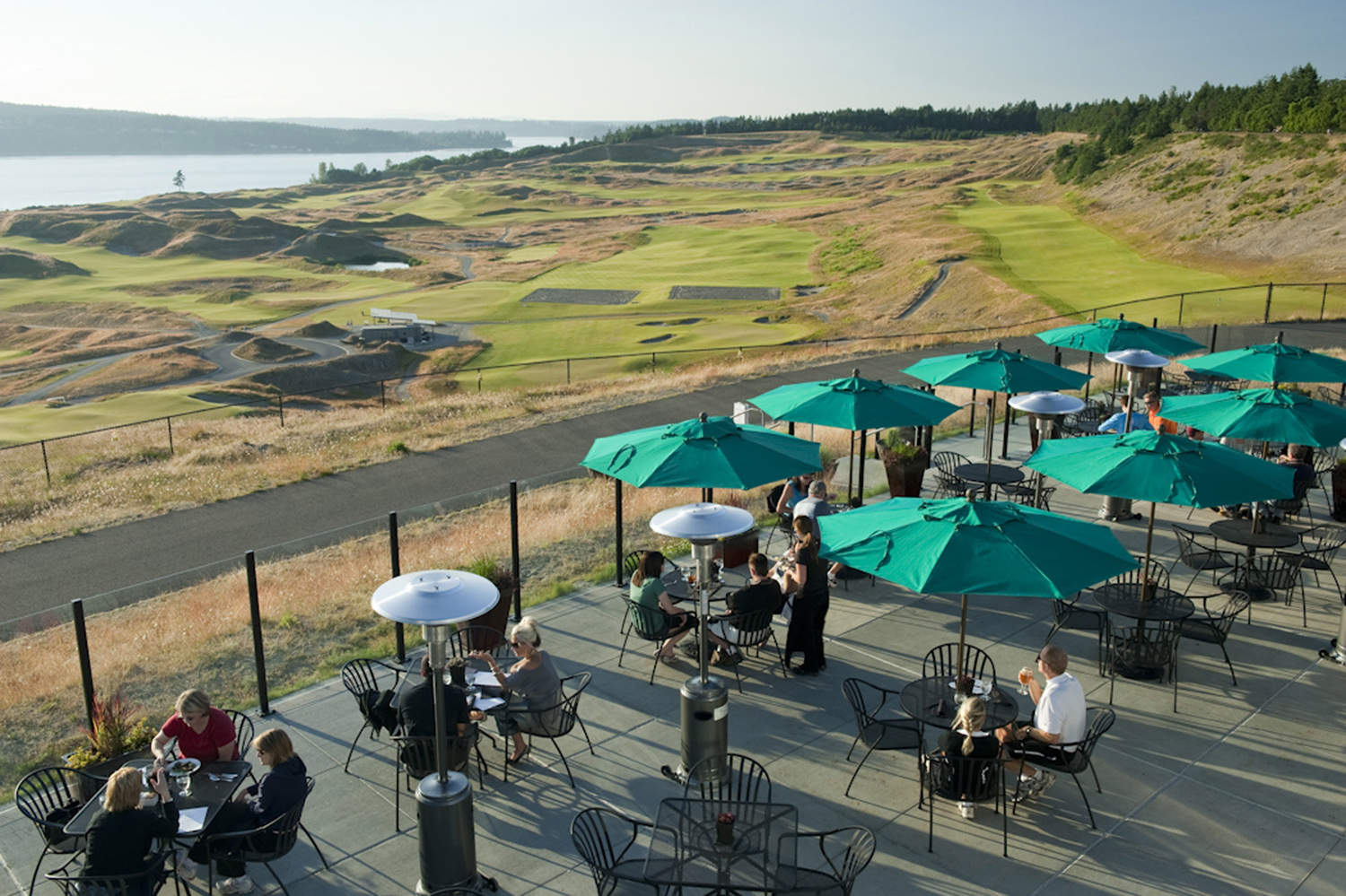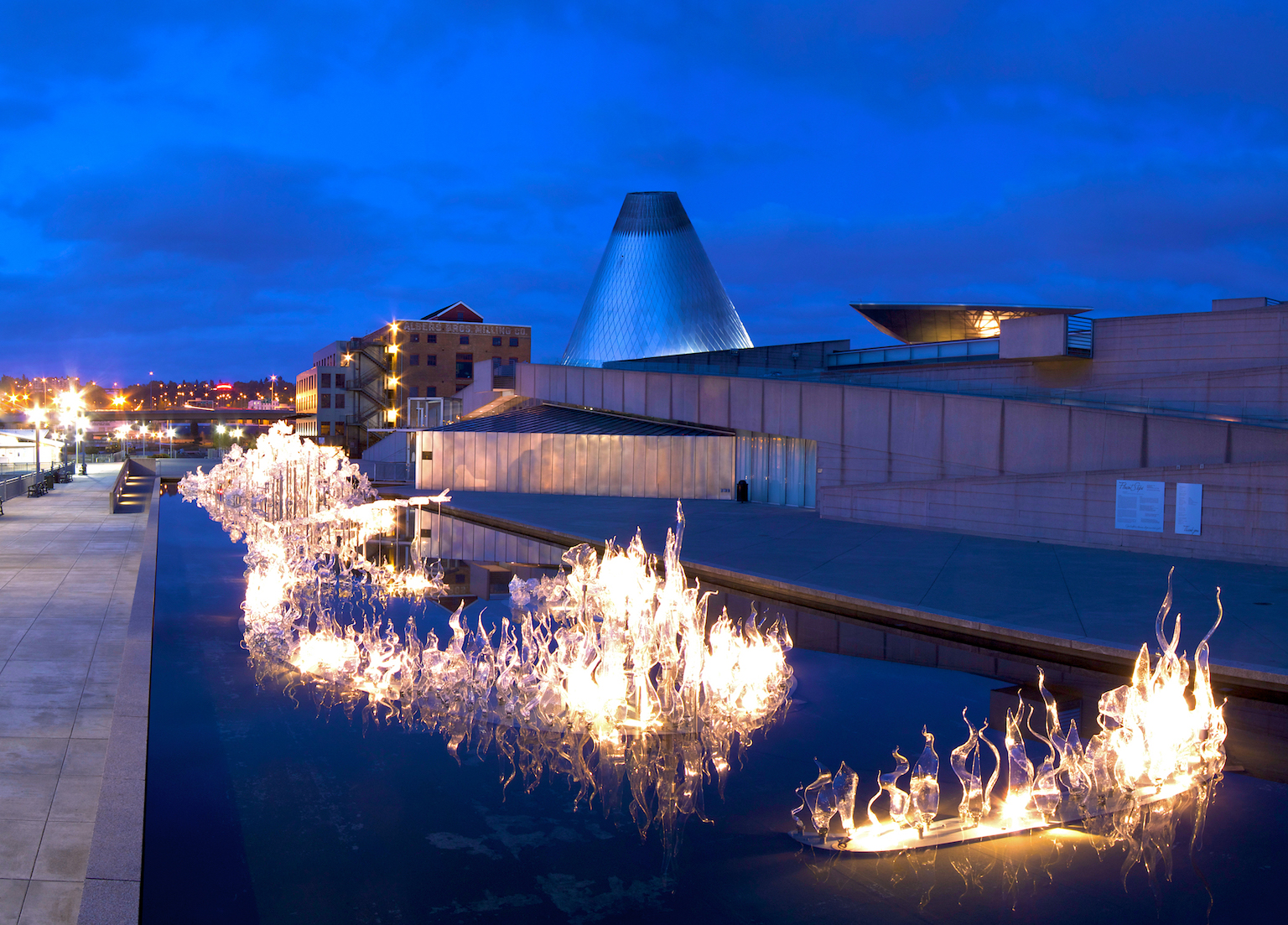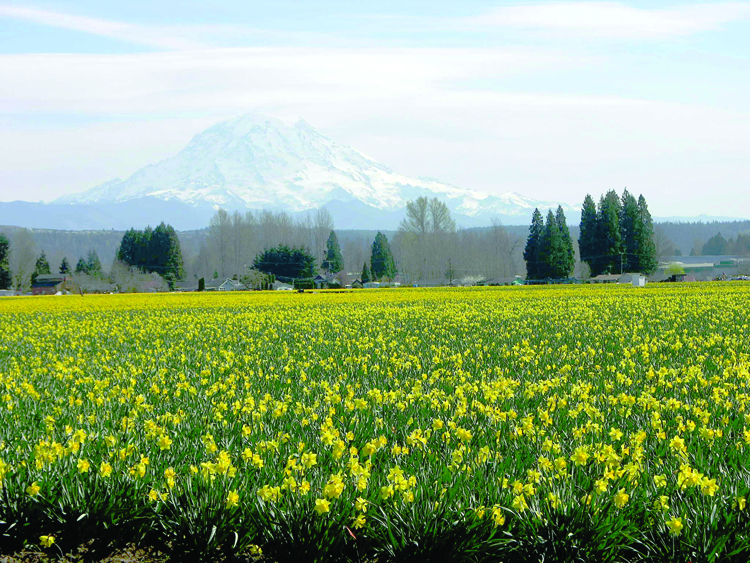Blog
Bevel Gardner & Associates forensic consulting and education providing instruction across the country and around the world. Located in Oklahoma, we are the largest independent forensic consulting company in the US. Follow our blog.
COVID-19 PANDEMIC UPDATE - COURSES FOR 2020
Bevel, Gardner & Associates would like to take this time to recognize first responders and healthcare providers who have endlessly provided their efforts and time to fight COVID-19. We genuinely appreciate the dedication to others.
BGA has cancelled six upcoming courses due to the Coronavirus pandemic. Continue to check our website regarding cancellations and rescheduled classes. As of now, the next scheduled class will be Bloodstain Pattern Analysis I. July 6, 2020 in Richland, WA. We will be taking all precautions necessary to keep our participants safe.
If you have questions about course information contact Craig Gravel rcgravel@bevelgardner.com
Protect Your Agency: Officer-Involved Shooting Incident and Critical Incident Seminar
It has become routine for daily news casts to feature stories related to law enforcement actions. There is a perceived upsurge in officer-involved incidents, when actually escalated reporting is the reason. As a result of this intensified attention, it is more important for agencies to improve their response to these incidents and increase expectations with thorough investigations and adequate training.
For an organization concerned with its reputation and the desire to build trust among both the public and within the agency itself, it is vital to understand how these incidents are judged.
HOW HARD ARE YOU WILLING TO WORK TO BUILD AND MAINTAIN YOUR REPUTATION?
For more information on hosting an Officer-Involved Shooting Incident and Critical Incident Seminar, visit our website.
NEW COURSES FOR THE NEW YEAR!
Happy New Year from BGA!
Our training calendar is quickly filling up for 2020. Don't miss a chance to attend one of our courses across the country. Update your communication preferences here so we can get the most applicable information to your inbox!
2020 AT A GLANCE
BLOODSTAIN PATTERN ANALYSIS
The BPAPD program incorporates three distinct training courses of one week each. A Level I course introduces the student to bloodstain pattern analysis with significant concentration on basic pattern recognition and documentation. The Level II course concentrates on proper application of scientific method, experimental design and clothing examinations. Between the Level II and Level III course the student participates in a mentorship program. The mentoring program includes requirements for both case analysis and research design/completion. The Level III course includes a pre-course case analysis and then on-site course concentration on experimental design, and court room presentations.
Bloodstain Pattern Analysis I Greensboro, NC.
Mar 9, 2020 – Mar 13, 2020
Bloodstain Pattern Analysis I Idaho Falls, ID.
Mar 16, 2020 – Mar 20, 2020
Bloodstain Pattern Analysis I Billings, MT.
Apr 6, 2020 – Apr 10, 2020
Bloodstain Pattern Analysis II Grand Prairie, TX.
Apr 13, 2020 – Apr 17, 2020
Bloodstain Pattern Analysis Fabrics course Lexington, SC.
Apr 20, 2020 – Apr 23, 2020
Bloodstain Pattern Analysis I Colorado Springs, CO.
Jun 1, 2020 – Jun 5, 2020
Bloodstain Pattern Analysis Fabrics course Grand Prairie, TX
Jun 15, 2020 – Jun 18, 2020
Bloodstain Pattern Analysis I Richland, WA.
Jul 6, 2020 – Jul 10, 2020
Bloodstain Pattern Analysis II Idaho Falls, ID
Aug 10, 2020 – Aug 14, 2020
Bloodstain Pattern Analysis II Lakewood, CO.
Sep 21, 2020 – Sep 25, 2020
PRACTICAL CRIME SCENE
PROCESSING & INVESTIGATION
The course is intended to develop a fundamental knowledge of crime scene processing technique. The course will illustrate to the student the six basic activities of crime scene processing and the sequence of those activities. The course concentrates on these core concepts: assessing, observing, documenting, searching and collecting, but also includes lectures on advanced techniques such as alternate light source utilization, bloodstain pattern recognition and trajectory analysis. It will introduce the student to the function and role of crime scene analysis.
Practical Crime Scene Processing and Investigation Grand Junction, CO.
Apr 20, 2020 – Apr 24, 2020
CRIME SCENE RECONSTRUCTION
CSRPD is designed to properly train competent crime scene reconstruction analysts. This comprehensive training program provides novice students with the tools to become a competent analyst and ultimately to the status of expert.
The CSRPD program incorporates our two distinct 40 hour training courses. The Level I course, which introduces students to reconstruction analysis with significant concentration on the accepted methodology and the application of the scientific method. The Level II course further develops the application of the scientific method and experimental design. A significant amount of time is focused on the development of demonstratives, which assist the analyst’s in explaining their opinions to courts of law.
Crime Scene Reconstruction I Colorado Springs, CO.
Jun 8, 2020 – Jun 12, 2020
GUILTY: When the Defense's Expert Testimony Shocks the Courtroom
Valentine's Day, 2001, Dr. John Hamilton, a revered OB/GYN, placed a frantic call to 9-1-1. He found Susan, his beloved wife of 14 years, dead on the bathroom floor of the home they shared in an upscale Oklahoma City neighborhood. She had been strangled with two of John's ties, and her head had been bashed in so violently parts of her brain were exposed. The doctor performed CPR in an attempt to save his wife's life. As a result, his shirt was covered in blood.
Suspicion of Dr. Hamilton started when a detective found a Valentine's Day card from Susan with an odd message. "I bought my cards two weeks ago, so I guess maybe they don't seem as appropriate now. But I do love you. Have a good day. Susan." Investigators wondered if the Hamilton marriage was as happy as it appeared to all who knew them. After further investigation, it was revealed Susan had recently discovered possible adultery by Dr. Hamilton. Some of her close friends told detectives Susan had been contemplating divorce.
With no forced entry into the home and the violent nature of the killing, it seemed unlikely Susan was killed as a result of a burglary gone wrong. This was a murder, and it was personal. Dr. John Hamilton was arrested for the murder of his wife.
The primary prosecutorial evidence was a blood stain on John's shirt, believed to be the shape of the injury over Susan's eye. The prosecution believed this injury was also the shape of the instrument used to cause the blunt-force trauma. The defense called blood spatter expert, Tom Bevel, to refute this theory. He performed an independent analysis of the shirt and confirmed the blood imprint on the shirt could have been the result of the doctor's account of trying to save his wife.
However, on cross-examination, Bevel was asked if the prosecution missed anything pertinent, to which Bevel replied "Yes". The courtroom was silent. Bevel went on to describe blood spatter inside the sleeve of Dr. Hamilton's shirt was consistent with the defendant using an instrument to beat his wife.
In less than two hours the jury convicted Dr. Hamilton of first degree murder.
Bevel said he had no choice. "Ultimately, you take an oath to tell the truth and that overrides any allegiance I may have to any client," he said.
When Blood Spatter Is More Closely Examinated
The 1995 murder case of Bonnie Horinek was one where blood spatter evidence was considered more closely than the other elements of the case. Warren Horinek, Bonnie's husband and a former Fort Worth police officer, claimed Bonnie committed suicide. Prosecutors, the medical examiner and homicide detectives believed in Warren's innocence.
However, the moment Bonnie's parents received the call from Warren claiming Bonnie killed herself, they knew it was not suicide. Previously the police were dispatched to the Horinek home after Warren shot his weapon in the backyard during an argument with his wife. In addition, Warren admitted to shooting the gun towards Bonnie one night after another argument. He claimed he was aiming above Bonnie's head while she lay in bed with the intention to scare her. This was his explanation for the bullet defect in the wall. It just so happens, that was the same bed where Bonnie's lifeless body was also found.
Bonnie's parents hired Tom Bevel of Bevel, Gardner & Associates, who was able to prove to the jury the blood spatter evidence on Warren's shirt was not only proof he was in the room when the death occurred, but it was also evidence of a murder. Based on Tom's expert testimony, Warren Horinek was convicted and sentenced to 30 years in prison.
Shooting Incident Reconstruction II - December 16 - December 20, 2019
HOSTED BY THE LEXINGTON COUNTY SHERIFF’S DEPARTMENT - SOUTH CAROLINA
This advanced course teaches investigators how to evaluate physical evidence associated with shooting scenes in an attempt to limit shooter and victim positions. This effort is an integral part of crime scene analysis, but due to the nuances involved, it is presented in a detailed one week course designed to ultimately take the student to expert status.
CLICK HERE TO REGISTER
UPDATED D/MAP - BPA METHODOLOGY
We realize the first question on the D/Map created some issues for some students when evaluating spurt patterns. The first question was “ Only small circles and ellipses”. However, when looking at spurt patterns, there are flows present. For some, the recognition of the flow patterns forced them to the non-spatter side of the D/Map.
To resolve this issue we altered the first question to read as follows: "Only small circles and ellipses with or without (on the D/Map it reads w/wo) flows."
We feel this change will resolve any contradictions and not create any other issues.
Attached is the most recent version of the D/Map. As always we hope you find this document useful.
GRIF'S ADVENTURES: BUENOS AIRES, PT 2
Presenting at the First Latin America IABPA Conference June 27-29, 2018
Monday (6/25)
Pablo Nunez, the conference organizer and an interpreter, took us (Andy Maloney and me) to the newest federal forensic laboratory in Argentina. The laboratory is a spacious facility both in terms of current working space and room to expand. While it is referred to as a chemical laboratory and that type of analysis is done there, other disciplines including DNA and crime scenes operate out of that building. We had no idea what to expect other than a tour of the facility.
Shortly after our arrival we found ourselves seated at a table speaking with not only the two directors of the facility but also with Comisario Mayor (Senior Commissioner) Javier Meregallit, the Director of all PFA Forensic Labs in Argentina! All of the Argentine officials were wearing suits and ties and we were casually dressed. Our guests made us feel most welcome and we were comfortable.
We also saw the exterior of Casa Rosada, which is on the east side of the Plaza de Mayo. Casa Rosada is considered the center of Argentina’s government. It was at one time the largest building in Buenos Aires. Tourism sources state the pink color was chosen as a means to attempt political harmony. Our local hosts told us the building at some point was painted with pigs blood by one of the country’s leaders many years ago. The pink color was a means (also) of hiding the blood. It sounds as if it could be the world record for a bloodstained area!
There was a national strike this Monday, so our walking tour of part of downtown was relatively free of crowds and traffic. One downside was that many restaurants were closed and many taxis were out of service.
We walked around the Plaza de Mayo, which has been the center of Buenos Aires since it was founded in 1580. One of the sites was the Catedral Metropolitana, Argentina’s main Catholic cathedral. This was the church where the current pope spent much of his religious life while he was in Argentina. It was built in 1580 and has undergone renovations several times since then.
Tuesday (6/26)
We visited the site of the conference (or congress, as it was called) so as to see the main presentation room and the rooms which would house the Friday workshops. Late in the afternoon most of the speakers went on a guided tour of the federal congressional building. We were able to walk into the congress room and be within a few feet of the desks at which the representatives sit while in session. That is something that could never happen at the U.S. Congress or did not happen the last time I participated in a tour of that building. At one time this building also housed a copy of every book published in Argentina. Those books now reside in a library near the congressional building.
Wednesday (6/27)
Lunch was provided for the staff and speakers. Two of the presenters after lunch had attended BGA BPA classes. These were Christina Vazquez (Salt Lake City in 2017) who offered a case presentation and Soledad Aldao (Baton Rouge in 2014) who presented her study on stringing areas of origin for impact patterns.
Soledad
Thursday (6/28)
The conference resumed at about 8:30 a.m. with both cases and research presentations. I had the last presentation of the day showing case applications of bloodstain pattern analysis. The conference closed at 6:50 p.m.
Friday (6/29)
The final day of the conference opened with Andy Maloney talking about the 2018 IABPA conference to be held in Ottawa, and Philippe Esperanca telling the attendees about the IABPA. I lectured about BPA on clothing, which served as preparation for my workshop that day.
After a vendor break, the first workshops began at 11:00 a.m. The timing of the lunch break was up to those of us conducting the workshops. The workshops continued the rest of the afternoon until about 6:00 p.m.
One of the workshop participants was Patricio Leyenda (shown wearing the blue and black striped shirt). He attended a BGA BPA class in Colorado Springs June 2018.
There were six teams involved in the clothing workshop and each team moved to a new set of clothing and case scenario after completing examination and documentation of one of the six sets. Every team wanted a group picture at the completion of its last assignment. At the end of a long day, these team photographs took on a less serious approach as one can see in a couple of the team photographs.
I had to step away from the workshop for a brief interview with an Argentine journalist for which Soledad served as the interpreter.
The participants assembled in the main room at 6:30 for the official wrap up of the conference. Several group photographs were taken at this time.
Saturday & Sunday (June 26 & 27)
We did some last minute sight-seeing on Saturday prior to going to the Buenos Aires airport. Two of us heading home to the U.S. had to deal with the airport being shut down for a few hours due to fog. I was lucky in that my flight wasn’t cancelled, but its departure was delayed about five hours. That meant missing my connecting flight in Houston on Sunday morning. However, the airline did secure a seat on a flight in the middle of the afternoon. When the adventure was over I had spent about 30 hours traveling to get back home!
My thanks to Pablo Nuñez for most of the photographs presented here.
-Grif
HOST A COURSE WITH BGA
Bevel, Gardner & Associates is in the process of preparing our 2019 training schedule. We are currently seeking agencies interested in hosting one or more of our courses:
Bloodstain Pattern Analysis I & II
Crime Scene Reconstruction I & II
Shooting Incident Reconstruction
Crime Scene Processing I & II
Officer Involved Shooting and Critical Incident seminar
**NEW** Shooting Incident Reconstruction II
**NEW** Bloodstain Pattern Analysis – Fabric Analysis course.
There is no cost to the hosting agency. Your agency can receive up to 3 freeslots, depending on the course and class size.
Visit our website to find information about hosting a course. If your agency is interested, contact our Training Coordinator, Craig Gravel, at 405-706-8489 or rcgravel@bevelgardner.com.
UPCOMING COURSE OFFERINGS
Bloodstain Pattern Analysis II El Paso, TX.
Jul 23, 2018 – Jul 27, 2018
Crime Scene Reconstruction I Oklahoma City, OK.
Jul 30, 2018 – Aug 3, 2018
Crime Scene Processing & Investigation I Grand Junction, CO.
Jul 30, 2018 – Aug 3, 2018
Bloodstain Pattern Analysis I Chubbuck, ID.
Aug 20, 2018 – Aug 24, 2018
Crime Scene Reconstruction I Colorado Springs, CO.
Sep 17, 2018 – Sep 21, 2018
Bloodstain Pattern Analysis I Naperville, IL.
Sep 24, 2018 – Sep 28, 2018
Bloodstain Pattern Analysis I Norman, OK.
Oct 8, 2018 – Oct 12, 2018
Shooting Incident Reconstruction II Lexington, SC.
Oct 22, 2018 – Oct 26, 2018
Bloodstain Pattern Analysis II Denton, TX.
Nov 26, 2018 – Nov 30, 2018
Crime Scene Reconstruction I North Las Vegas, NV.
Dec 3, 2018 – Dec 7, 2018
Bloodstain Pattern Analysis I Seattle, WA.
Dec 17, 2018 – Dec 21, 2018
Bloodstain Pattern Analysis I Phoenix, AZ.
Mar 11, 2019 – Mar 15, 2019
Bloodstain Pattern Analysis II Colorado Springs, CO.
Jun 24, 2019 – Jun 28, 2019
GRIF'S ADVENTURES: BUENOS AIRES, PT 1
Grif’s trip to Buenos Aires to present at the First Latin America IABPA Conference June 27-29
Read MoreSeveral Training Opportunities With Bevel, Gardner & Associates.
Bevel Gardner & Associates offers courses to train individuals in the forensic science procedures they use. The purpose of Forensic Science is to examine and collect information to help determine the facts at the scene of the crime. It may be used to confirm or exclude a suspect from further investigation. BGA teaches the proper analysis techniques preparing for presentation in a court of law. Visit our website for more information about course offerings across the country. Hurry! Our courses have been filling quickly.
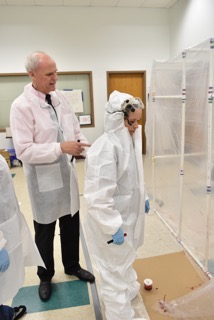
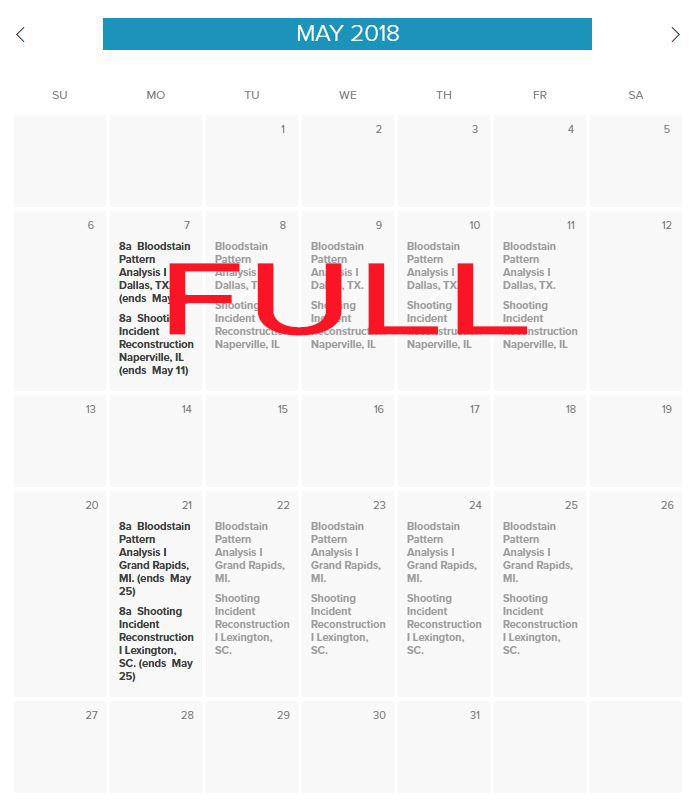
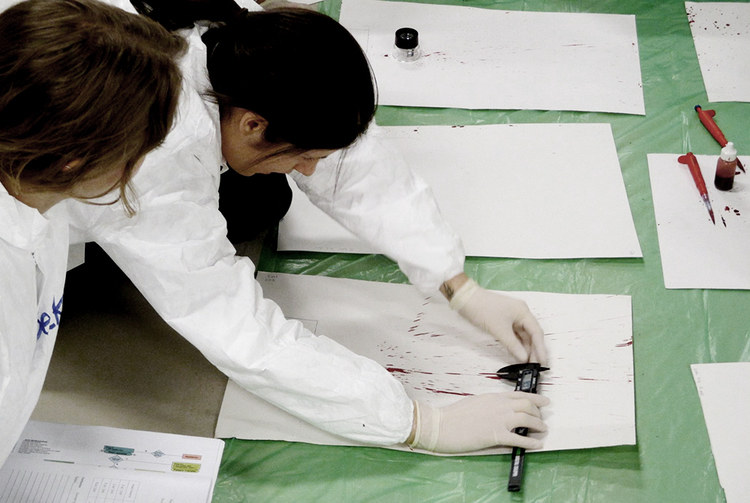
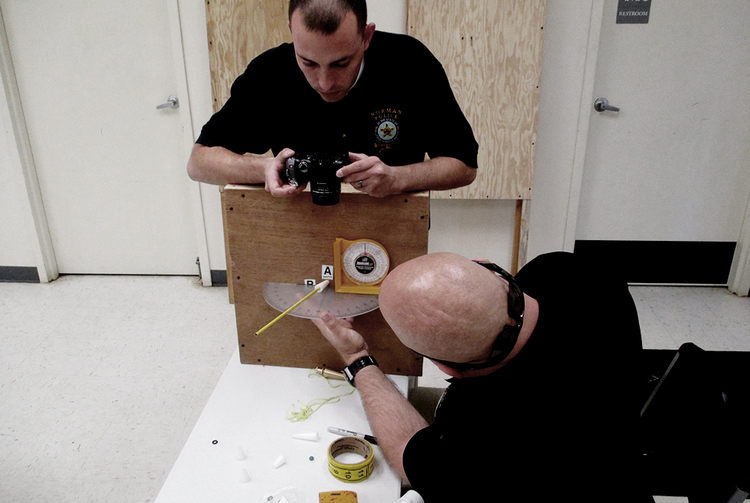
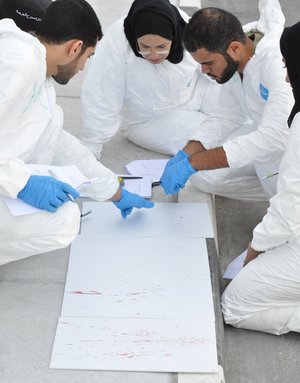
BLOODSTAIN PATTERN ANALYSIS I, Instructors - Ross M Gardner & Tom "Grif" Griffin
This course introduces the student to bloodstain pattern analysis with significant concentration on basic pattern recognition and documentation.
Kent County Sheriff’s Office, Grand Rapids, MI
May 21-25, 2018 - REGISTER
SHOOTING INCIDENT RECONSTRUCTION I, Instructor - Jonathyn Priest
This course provides the experienced detective or crime scene investigator with the skills necessary to analyze and reconstruct shooting incidents. Students are taught to recognize and properly document the unique attributes of a shooting scene. Through a series of classes, laboratories and practical exercises, students will learn to interpret the dynamic relationship between the scene, evidence, and victim(s) injuries. The methodology and techniques needed to properly analyze and reconstruct the scene are emphasized. Students will be able to apply these skills to determine position of shooter(s), victim(s), and critical evidence, and to determine sequence of events.
Lexington County Sheriff's Office, Lexington, SC
May 21-25, 2018 - REGISTER
BLOODSTAIN PATTERN ANALYSIS I, Instructors - Ross M Gardner & Jonathyn Priest
This course introduces the student to bloodstain pattern analysis with significant concentration on basic pattern recognition and documentation.
Colorado Springs Police Department
June 11-15, 2018 - REGISTER
CRIME SCENE RECONSTRUCTION I, Instructor - Craig Gravel
A course of instruction designed for investigators, crime scene technicians, forensic technicians, and others involved in criminal and medical-legal investigations and crime scene analysis. The course is intended to develop a fundamental knowledge of appropriate hypothesis development and testing procedures and provide an objective form of defining the events associated with a complex crime (Event Analysis). The course syllabus is not intended to create an “instant” expert. This course is not a crime scene processing course.
Oklahoma City Police Department
July 30-August 3, 2018 - REGISTER
The CSI Effect
CSI and it's spin-offs are some of the most popular shows on television. People love a good crime drama. Are CSI and other forensic-inspired shows affecting the jury pool? Are people's views of what actually happens in the courtroom impacted by watching these television shows?
The CSI Effect Theory asserts "popular TV crime dramas that focus on forensic science, may affect the behavior and expectations of jurors in real-life cases. The theory also suggests that jurors’ perceptions of the need for specific forensic evidence may impact their decisions in the courtroom."
Research shows jurors who watch forensic and crime shows have the expectation of scientific evidence at trial. These jurors enter the courtroom expecting to see DNA, fingerprints and other forensic evidence. Video enhancements seem so easy on television. In real life situations, the video quality is typically not good and enhancements are less common. DNA evidence is not processed instantly like it is on tv. Fingerprints cannot be collected from just any surface. It is the responsibility of counsel to educate jurors about how entertainment and real life differ.
"22% of jurors expect DNA evidence to be presented in every criminal case."
"36% of jurors expected to see fingerprint evidence in every criminal case."
There seems to be a CSI factor for jurors in real-life courtrooms. However, according to the study, the effect did not affect jurors' willingness to convict, which is good news for the judicial systems worldwide.
FBI Releases 2016 NIBRS Crime Data
The National Incident Based Reporting System (NIBRS) is a law enforcement crime incident reporting system used to show detailed crime trends across the US. The specific information collected includes the nature and type of the crimes, characteristics of the victim(s) and offender(s), and the type and value of property involved. The downside of this system is only about one-third of law enforcement agencies in the country use this method to report information about crimes in their jurisdictions. Read more about the benefits of participating in the NIBRS.
In 2016, new crimes were added to the system. Animal cruelty was included since it is considered a crime against society and oftentimes linked to domestic violence or other violent crimes. Hacking and identity theft were also added to the category crimes of fraud.
Some additional highlights from NIBRS, 2016:
- Based on aggregate data, NIBRS agencies reported 5,237,106 incidents involving 6,101,034 offenses with 6,437,018 victims.
- There were 4,963,644 offenses with known offenders (in which at least one characteristic of the offender was known.) Of those offenders whose age was known, 43.5 percent were between the ages of 16 and 30. Sixty-three percent of known offenders were men, and 25.6 percent were women. In other cases, sex of the offender was unknown.
- Of the reported offenses, 62.5 percent were crimes against property, 22.7 were crimes against persons, and 14.8 percent were crimes against society (such as gambling or animal cruelty).
- More than half of the victims (52.4 percent) knew their offenders (or at least one of the offenders if the incident included more than one offender). Additionally, 24.3 percent of the victims were related to their offender (or at least one offender if more than one was present.)
- The NIBRS report contains data on 3,261,521 arrestees. Of those who were arrested, 34.1 percent were 21 to 30 years old. More than 71 percent of arrestees were men, and 28.3 percent were women.
More specific NIBRS data can be found in the NIBRS interactive map or in the Crime Data Explorer tool.
2018 ACSR National Conference
Register here for the 2018 ACSR Conference held in Tacoma, WA on March 6-8, 2018 before the New Year!.
Tentative lineup of talks & workshops:
- Photo documentation of bullet holes, trajectory rods, and lasers for later analysis
- High speed camera/photography use in reconstruction
- Omni-Car: Comprehensive field testing of blood, GSR, semen, and infrared aspects of a car search
- Handheld laser 3D scanning of bodies at autopsies
- Drone use in forensic reconstruction
- Bullet holes in clothing: evaluation & documentation
- Creating effective court exhibits from scan data
- Keynote debate/panel on bias in forensic science
Discover Tacoma! The conference will be held at Hotel Murano. Rooms have been set aside and are available for $117/night using this link. The cut-off date for this rate is February 12, 2018.
IN THE NEWS
It was mandated by the President John F. Kennedy Assassination Records Collection Act of 1992 that secret records be released regarding details into the investigation of the assassination of President Kennedy. On October 26, 2017, President Trump allowed for the release of over 3,000 documents. Here is a flashback video of Tom Bevel recreating the crime scene of the moment President Kennedy was shot.
CRIME SCENE RECONSTRUCTION VIDEO - INSIDE THE TARGET CAR, JFK ASSASSINATION
BGA Down Under
Ross recently completed a month in Australia, teaching courses in Melbourne, Canberra and Sydney.
Read MorePractical Crime Scene Processing and Investigation
Would you like to know how to evaluate physical evidence and its context in a scene in an attempt to define objective actions that occurred during an incident? Join us in North Las Vegas June 5th - June 9th for the Practical Crime Scene Processing and Investigation course, and learn the six basic activities of crime scene processing, different scene mapping methods, recognize basic blood stain patterns and more. Click the link below to register and for more information!
Crime Scene Reconstruction I
Join us in North Las Vegas on March 6th-10th for the Crime Scene Reconstruction I course hosted by the North Las Vegas Police Department. Take the opportunity to learn how to use a methodical approach when examining crime scenes. The course is intended to develop a fundamental knowledge of appropriate hypothesis development and testing procedures and provide an objective form of defining the events associated with a complete crime. For more information and to register click the link below! Cant wait to see you there!
Practical Crime Scene Processing and Investigating
Would you like to know how to evaluate physical evidence and its context in a scene in an attempt to define objective actions that occurred during an incident? Join us in North Las Vegas February 27th - March 3rd for the Practical Crime Scene Processing and Investigation course, and learn the six basic activities of crime scene processing. Click the link below to register and for more information!








